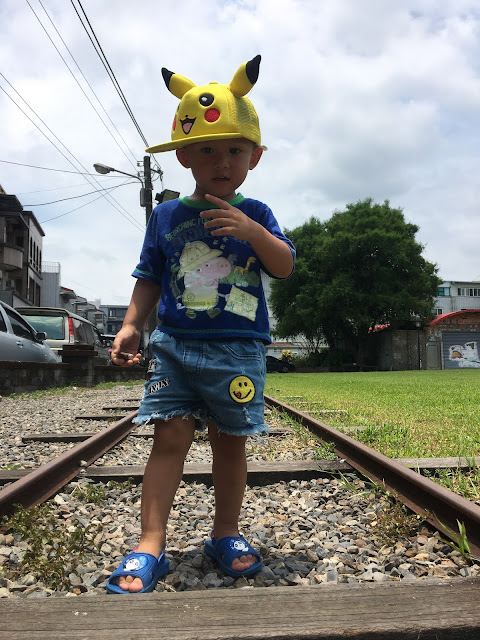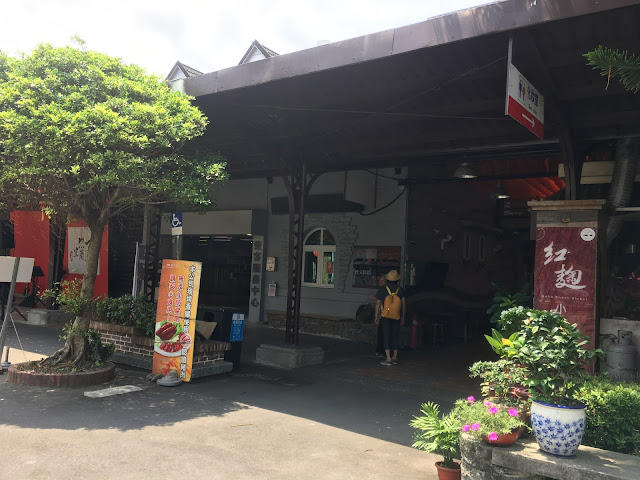Our almost one-week-long holiday took us to the eastern part of Taiwan, exploring Yilan, Hualien, and Taitung. We started our journey by heading north from Tainan and made a stop at Fulong Beach in New Taipei to experience the Sand Sculpture Festival. The drive took us approximately 4 hours. From there, we continued to Yilan, where we visited various attractions such as Toucheng Town, Brick Kiln, Wine Museum, Confucius Temple, night markets, and the Nanfangao Lookout. We spent two enjoyable days exploring Yilan before moving on to Hualien.
During our visit to Hualien, we had the opportunity to experience the breathtaking Taroko National Park for the first time. The scooter ride along the winding roads next to the tall cliffs felt a bit thrilling but was absolutely worth it for the stunning views. We also explored some of the Japanese remains in Hualien, including the Manor House and Pine Garden. Although I personally feel that Hualien may be slightly less captivating than Yilan or Taitung, we still enjoyed our time there.
On our way to Taitung, we made a stop at a beautiful waterfall and also visited Luye Highlands. As we typically visit Taitung more frequently, we didn't plan to stay there this time and decided to drive back to Tainan. However, as it coincided with the beginning of a long weekend, accommodations were fully booked, and traffic started to get heavier. If you're interested, I have many posts introducing other attractions in these three counties, so feel free to check them out. The eastern part of Taiwan is truly a beautiful region to explore.
~ ~ ~
On the second day of our trip, we decided to drive further south to visit Yilan City and Luodong. Before heading out, we wanted to experience the hot springs in Jiaoxi. While our accommodation already had hot springs, I was determined to find another one in a different location. Close to our lodging, we discovered the Jiaoxi Public Hot Spring Park (湯圍溝溫泉公園). We also came across a shop selling chili ice cream, but the high price scared us away. Inside the shop, we noticed various chili-infused products like chocolate and beer.
Downtown Jiaoxi was very convenient, especially when it came to finding food options for the night. Yilan is famous for its scallions and spring roll ice cream.

Yilan Brick Kiln (宜蘭磚窯)
The Yilan brick kiln is an exemplary representation of the early Mulan kilns in Yilan County, featuring brick vaults and brick floors. It was officially designated as a county monument on December 27, 2002.
Also known as the Jinmei brick kiln, the Yilan brick kiln derives its name from the area's highly viscous soil, which is ideal for firing red bricks. Brick kilns have been constructed in Yilan since the Qing Dynasty. During the Japanese occupation period, there was a high demand for bricks, leading to the peak of brick kiln production.
However, with advancements in science and technology, brick-making techniques have improved, and concrete has gradually replaced the use of bricks. As a result, brick kilns have gradually declined and fallen into disuse. The Yilan brick kilns stand as the most well-preserved brick kiln monuments, representing centuries-old heritage in Yilan County.
The Yilan brick kiln consists of 13 brick kilns, all constructed with red bricks. At the end of the kiln, there stands a towering chimney reaching a height of 37 meters. Despite enduring numerous natural disasters over the years, the chimney stands steadfast and unyielding.
When visiting the Yilan brick kiln, visitors can observe the tools used for brick-making, explore the brick kiln where bricks were fired in the past, and encounter informative displays detailing the history of the brick kiln. Additionally, there is a folk art and literature studio that serves as a reminder of the brick kiln's glorious past.

Memorial Hall of Founding of Yilan (宜蘭設治紀念館)
In 1812, the Qing Dynasty established the Karmaran Hall in Yilan, initially commissioned by Commissioner Yang Tingli, who served as the prefect of Kailan prefecture, and later succeeded by Zhai Gan. This marked the historical development of Yilan's government. In 1895, during the Japanese occupation period, Yilan experienced significant stages of governance, including armed conflicts, modernization, and social unrest during the Pacific War. Over the course of 200 years, Yilan has been shaped by the governance of different regimes.
The Yilan Memorial Hall, built during the Japanese occupation period, was the official residence of successive chief executives. It bears witness to the trajectory of Yilan's administration over the past two centuries. Originally, the preservation of this historical building was sparked by a proposal to protect a 100-year-old camphor tree in the park. The Yilan County Government, in order to preserve this significant tree and leave a historical testament to Yilan's political development, launched the "South Gate Project" in Yilan City. This initiative not only resulted in the preservation of the large tree but also led to the reconstruction of the century-old mansion in 1997. The Yilan Memorial Hall showcases the historical development of the county's government since the Qing Dynasty and has given new life to this historical space.
Completed around 1906, the Yilan Memorial Hall is a fusion of Japanese wooden house and Western classical architecture styles. The outdoor garden, adorned with old trees, is one of the most distinctive features of the site. The garden spans an area of 800 pings, with the building covering 74 pings.
Wusha Residence (吳沙故居)
Wusha Residence holds significant historical importance as a contributor to the development of Yilan. During a time when Yilan was relatively undeveloped, Wusha led Zhang, Quan, and Yue ethnic groups in reclaiming the land. Initially, he had conflicts with the Karmarans, but later gained popularity when he helped them during a smallpox outbreak. This act of kindness fostered gratitude and led to peaceful coexistence, laying the foundation for Kailan. As a respected figure, Wusha built a house and settled in the area. Although his former residence in Wusha has been renovated, traces of the hundred-year-old mansion can still be seen. The house is adorned with tablets and portraits of WuSha, paying homage to his legacy.
1. Tangweigou Hot Spring Park: 262宜蘭縣礁溪鄉德陽路99-11號湯圍溝溫泉公園














0 komentarze:
Post a Comment